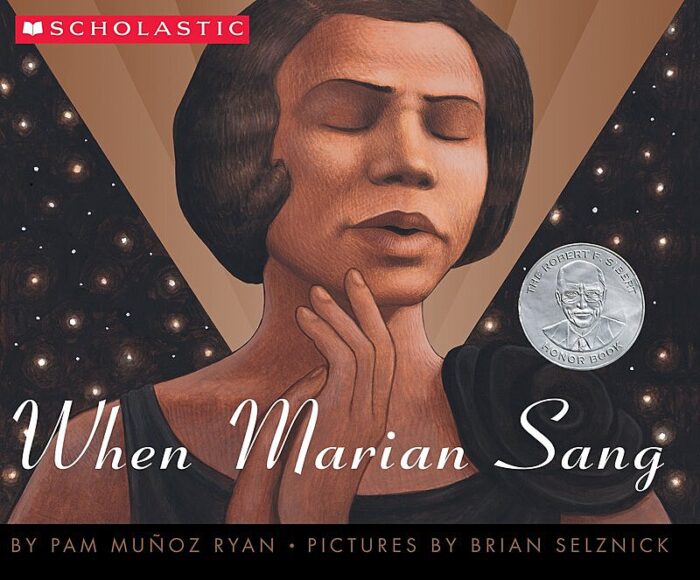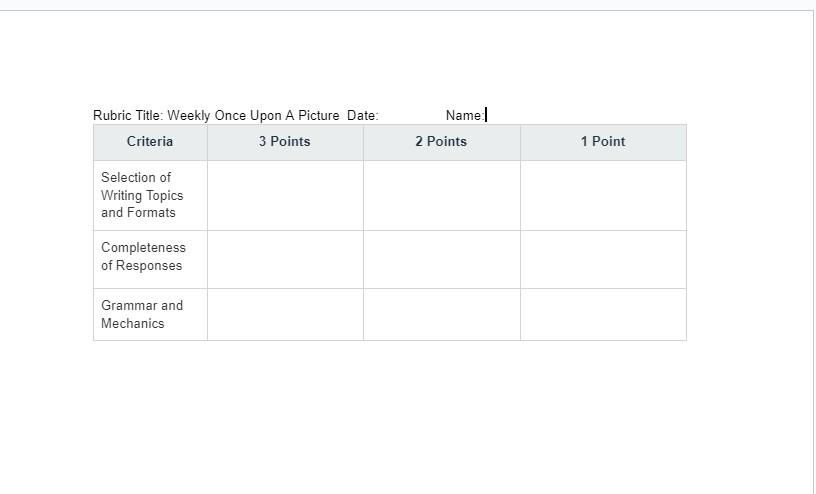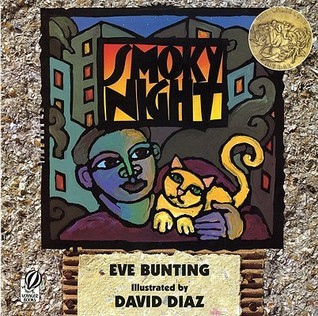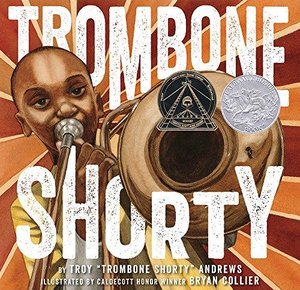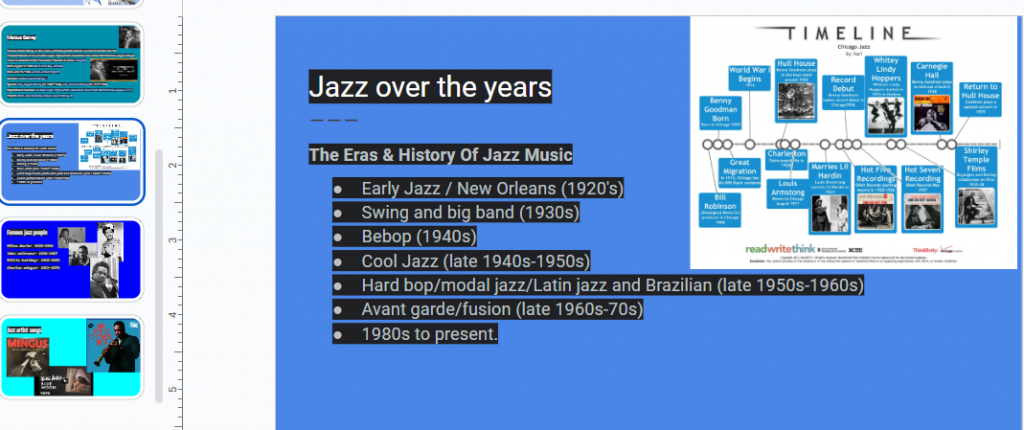Integrating African American Stories into the Language Arts Curriculum
Kari Matthies
I was excited to hear about my acceptance into the NEH summer seminar in 2023 at the Worlds of Words Center. As a twenty-year veteran teacher, I am passionate about helping students find connections to their studies and enabling them to find a sense of place in our school. The seminar explored personal stories, cultural learning, the use of literature to build connections, and the need to expose students to truth in history. Due to my previous participation in several seminars and support from the Native American Education Director, I had already integrated connections to Indigenous students in our school into my curriculum and instruction included connections. What was missing were connections to the rich culture and history of African Americans, especially in Red Wing and Minnesota. I set out to create units of study on African American voices based on the following essential questions.
- What are the prominent events and characters in African American history in Minnesota from 1930 to the present day?
- How do books historically represent the events happening in a community?
- How does culture and literature reflect the history of a community?
I am a High School Special Education teacher in Red Wing, Minnesota. Our town is the home school to the Prairie Island Indian Reservation. Red Wing Minnesota has a population of 16,763 and is a farming community and a hub for city commuters. Our demographics are 77% White, 9% Hispanic/Latinx, 4% Black, 3% American Indian, 1% Asian, and 6% two or more. Red Wing Senior High has 1000 students and is in the bottom 20% of all schools in Minnesota in reading and math proficiency due to a high number of students with special education needs. As of 2022, 23% of students qualify for free or reduced lunch. Red Wing has a 94% graduation rate. I case manage students in grades eight and nine with learning disabilities and emotional and behavioral challenges. I also teach replacement reading classes for students in grades eight through twelve focusing on strategy and skill development in the areas of literacy and study skills.
My curriculum for this class is based on individual students’ literacy and transitional goals on their Individual Education Plans. The goals are based on state standards and modified to meet individual needs. I incorporate high-interest low-Lexile reading books for independent reading (Lexile levels 200-600) and small group instruction. The experiences I share in this article are large group lessons that incorporate literacy skills and transitional skills such as communicating with others, using resources to find needed information, internet skills, social skills, and employment skills.
During the summer institute, I developed a multimodal text set on African American Voices, specifically the history and contributions of African Americans in Minnesota. Students interacted and developed their stories and learned about their history and the experiences of people of color in Minnesota. I incorporated music and musicians into the unit due to students’ connections and interest in music. They were engaged, interacting, and learning.
The reason I chose to focus on African American students is twofold. I have many resources and materials to present in my classes to engage Indigenous students with their stories but lacked any strong materials for students of African American heritage. Working with students who have educational and behavioral needs, I need to build connections so that my instruction is not only educational, but also provides skills for students to be successful.
African American History
My first challenge was to incorporate strong biographical and fiction picturebooks and two chapter books for the unit. The units became the first quarter of the language arts class I teach for students who are two grade levels below in their reading skills due to behavioral differences and learning challenges. I chose a series of children’s books and the novels, Darius and Twig by Walter Dean Myers (2013) and Piecing Me Together by Renee Watson (2017). I read these two novels aloud to students. These books met the criteria of the state standards, introduced characters and events in history, and were the basis for lessons on grammar, writing, mechanics, and comprehension strategies.
The slideshow I created on African American history is chronological from pre-1960 to the present day. To build prior knowledge and connections, we started with music from Duke Ellington and an illustrator study of Don Tate. This helped build awareness of illustrations and the use of illustrations to support comprehension strategies while reading. I played all genres of music and opened a discussion of how music can give insight into culture and the current state of the country. I used a picturebook biography of Marian Anderson by Brian Selznick and Pam Muñoz Ryan (2002) about how she overcame prejudice to share her passion and talents. The story opened a discussion of marginalized people and how they can overcome obstacles to be successful.Darius and Twig by Walter Dean Myers (2013) is the chapter book I read to students. I always start a book with an author study and so added videos of Myers so students could hear his reasoning for writing the book. Since the book does have some language that may be uncomfortable, I discussed how language can affect people and why the language is relevant to a story. We completed an activity making inferences with quotes from the book to facilitate skill instruction and foreshadow what the book is about.
Fridays in our class writing day. I found a website called “Once Upon a Picture” that I often use with students. The site has pictures with questions and students select their pictures and choose a response. They may use the questions, write their own questions, write a story, or write a reflection. As they gain skills and learn about writing types I change the options.
Minnesota Connections to African American History
Continuing with the unit, we focused on Minnesota connections to African American history including music, culture, and influential people in Minnesota. We studied some of the current change makers in Minnesota so students could make connections from the past to the present. I used several videos and articles on African Americans in Minnesota who made contributions to Minnesota labor and legal rights. An interactive video on creating timelines helped students choose one of the leaders and create a timeline. Many of the videos and articles were located through the Minnesota Historical Society website. Examples of articles used with students are the Frank Boyd Resource and the Nellie Stone Resource. I used the articles for our history studies and to teach students to find appropriate information on the internet.
Tar Beach by Faith Ringgold (1991) was a picturebook we used to study the illustrator Faith Ringgold and how she found her voice through art. We did a Look, Think, and Imagine activity which asks students to discuss their work, moving from a concrete to an abstract perspective, a lens that is complicated for students. Students are first asked to Look at an image and describe literally what they see such as colors, lines, characters, and settings. The Think asks students to answer comprehension questions and make inferences directly from the story. Finally, students are asked to Imagine open-ended responses to predict and determine themes and purpose.
After an exploration of African American leaders in the field of law in Minnesota, the weekly unit ended with a study of Aretha Franklin and her accomplishments and passion to speak out about injustice and her fight for civil rights, reading a picturebook by Carole Boston Weatherford and Frank Morrison (2020). We then returned to Minnesota with a discussion of the “long hot summer” of 1967 when riots erupted in Minnesota over civil rights due to employment discrimination. We later compared these riots to the George Floyd riots by using articles, photos, and music.
Smoky Night by Eve Bunting and David Diaz (1994) was an excellent read-aloud to open up discussion about rioting and the realities of riots to everyday people. At the end of the book, we did another round of Look, Think, and Imagine but also engaged in “tossing questions.” Tossing Questions came about by accident to engage students, and they enjoyed this strategy. I wrote comprehension questions on sheets of paper and randomly had each student pick one paper with three questions on it related to Look, Imagine, and Think. Students wrote their thoughts on their paper. When everyone was finished, students tossed their papers to the front of the room, and we read them out loud for a discussion. An example of the three questions on one slip of paper is:- Look – Who is the “I” in this story? Where does this story take place? Why are the lights not on?
- Imagine – I wonder what would make people so angry that they want to smash and destroy.
- Think – How does the neighborhood recover from the riot? Do Daniel, Mama, and Mrs. Kim have a better relationship after this sad night?
The poetry standards in our curriculum were met with a unit on Langston Hughes and Ray Charles. Video interviews, including a visit to Sesame Street and an interview on a talk show, were part of the introduction to a comprehension assessment, along with an assignment to write an autobiographical or fiction poem about a young person and their life. As this was our first poem, students wrote a free-verse poem based on “I Too Am American’ by Langston Hughes.
One of the class’s favorite lessons was on the Sabathanites Drum Corps, a group founded as a youth organization in Minneapolis in 1964. The exploration started with me reading the name of the group and showing a video of the group performing in a parade in the 1970s Aquatennial Parade in Minneapolis. Students met in small groups to write an article about the Sabathanites using the five W’s strategy (who, what, why, where, and when) based on the name of the group and the video. Students then learned that the group was started to give youth something to do and to keep them out of trouble in the inner city of Minneapolis by a Baptist church. When the group was performing in a parade in 1967, they were attacked by overzealous police due to concerns about riots. This event was the beginning of the “long hot summer of 1967” in Minneapolis when riots erupted, and entire blocks of neighborhoods and businesses were lost. I also showed a video describing the children’s crusade in 1963 in Birmingham to students. The students wrote a new article using the Five W strategy on either the Children’s March or the Sabathanites Drum Corp, using their new knowledge of events.
Our skills focus was building vocabulary and identifying story elements through picturebooks, articles, and our novel study of Darius and Twig. As we continued to move through the decades with Minnesota history and music highlights, I read aloud from Darius and Twig. Each day, I chose a student to document our daily reading of the novel, giving that student a note card and a Sharpie. Their task is to choose three things they feel are important in the read-aloud for that day. They can write facts, observations on story elements, characters, and traits, or draw an illustration on any piece they feel is important to remember from the chapter for that day. I displayed the cards on the closet doors. Each day, before I began reading, I asked three students to say one word to describe what we had last read, using the wall if they were not sure about what to say. Special education teenagers often struggle with behaviors in general education classes due to learning differences and their lack of confidence in front of peers. I try to teach strategies to be successful in our classes, with the goal for them to engage and be successful with their non-disabled peers.
Trombone Shorty by Troy “Trombone Shorty” Andrews and Bryan Collier (2015) is an autobiographical picturebook of an amazingly talented horn player who struggled as a child. Students made strong connections from listening to this book on his childhood and then watching his NPR performance as an adult. We then explored the roots of current hip-hop music by completing a “book tasting” of books on Black musicians and looking at local Minnesota icons in hip-hop and music production. A “book tasting” consists of students using one class period to look at books in a genre, recording the title and author, reading the back cover and first page, and choosing one book to read independently.
This picturebook is connected to a study of the Rondo neighborhood in St. Paul that was torn down to construct a highway. Students searched for other examples of marginalized neighborhoods that have been erased and what the current state is of these areas. Then they created a soundtrack they felt represented the plight of marginalized people trying to keep their neighborhoods, businesses, and cultures. We also explored information, articles, and videos of Prince, Bob Dylan, The Andrews Sisters, Jimmy Jam Terry Lewis, and Lizzo. All of these influential artists have ties to Minnesota. Just a fun fact–Lizzo performed on the Indigenous Nation, and her concert video was filmed at the Nation so many Indigenous students were in the video and able to meet her.When we finished reading Darius and Twig aloud, I started reading aloud Pieces of Me by Renee Watson (2018). We listened to a talk about Gaelynn Lea Tressler, an American Folk Singer from Minnesota who has significant physical differences. At this point, we started preparing for the writing of a five-paragraph personal narrative that students completed on themselves, someone they know, or one of the people we studied. Students had daily mini lessons, usually using Nearpod, on writing their narratives, and used a variety of graphic organizers to organize their papers at every step. I keep these organizers available for all students to use in their general education settings and showcase a website called TeachRock.org to find biographies and to look at for inspiration and examples along with a collection of biographies in picturebook form.
In the picturebook, I See the Rhythm by Michele Wood and Toyomi Igus (1998), several two-page spreads highlight specific historical events and use important vocabulary to describe people and places. People, events, and phrases that we highlighted from this book include:
- Africa: Origins (pp. 4-5) Ibo, Yoruba, and Bantu kingdoms; shackles; the slave trade; the Middle Passage; the differing roles of griots
- Enslavement: Slave Songs (pp. 6-7) Nat Turner; Harriet Tubman and the Underground Railroad; the Fugitive Slave Act; the Civil War
- Reconstruction: Birth of the Blues (pp. 8-9) The Emancipation Proclamation; Jim Crow laws; Fisk College; Ida B. Wells; lynching
- The Great Migration: Ragtime and Jazz Beginnings (pp. 10-13) National Association for the Advancement of Colored People; Madame C. J. Walker; Marcus Garvey and the Universal Negro Improvement Association
- The Harlem Renaissance: The Sounds of Swing (pp. 14-17) the Great Depression; “race records”; Marian Anderson
- Civil Rights Movement: Cool Jazz, Gospel, and Rhythm & Blues (pp. 21-25) Brown v. the Board of Education; Rosa Parks; Septima Clarke; Martin Luther King, Jr.; the March on Washington for Jobs and Freedom; the Civil Rights Act of 1964; Malcolm X
- Black Power: Black Rock and Funk (pp. 26-29) Huey Newton, Bobby Seale, and the Black Panther Party; Vietnam
After exploring this book students created a timeline using Google Slides. They were asked to have at least six slides with one person, place, or event on each slide and adding vocabulary words, people, and events to the appropriate era, at least two other details from the book, and pictures, video, music, and anything else they felt was interesting.
The slides of students often are copied and pasted information from the internet without citations. In semester two, students revisit these timelines after learning how to put the information they read into their words. This is a very difficult skill for students to master but is expected in general education classes.
The concluding activities of this unit are a focus on Juneteenth including a visit from the Black Student Union members for a question-and-answer period. Students wrote two questions to ask the union members to culminate our study. Finally, we engaged in a two-day exploration of currently available African American music and theater in Minnesota. I wrote grants to cover the cost of a visit to a theater or to have a theater come in to work with students.
Final Reflections
My heart grew seeing students’ success and pride in their learning. Hearing them share their knowledge in their general education classes and seeing their confidence as learners has made me want to continue providing opportunities for them to tell their stories.
Students embraced using learning strategies such as Look, Think, and Learn, completing news articles on events, using primary and secondary sources, and finding appropriate sources for information on the internet. Since they have Individual Educational Plans, I used the lessons and activities to report their progress and was impressed at their growth in areas such as comprehension, figurative language, inferences, and choosing literature to explore on their own.
The next project I want to create is a similar unit on Central America. I have a huge array of resources from the seminar and will use what I have learned at the seminar and from completing the African American Voices as a template to create a learning plan to explore the stories and real history of Central America.
References
Andrews, T. (2017). Trombone Shorty. Illus. B. Collier. Abrams
Bunting, E. (1999). Smoky night. Illus. D. Diaz. Clarion
Celenza, A.H. (2018) Duke Ellington’s Nutcracker Suite. Illus. D. Tate. Charlesbridge
Hughes, L. (2012). I, too, am America. Illus. B. Collier. Simon & Schuster
Igus, T. (2014). I see the rhythm. Illus. M. Wood. Children’s Book Press
Meyers, W.D. (2013). Darius and Twig. Amistad Books
Ringgold, F. (1991). Tar beach. Illus. F. Ringgold. Dragonfly Books
Ryan, P.M. (2002) When Marian sang. Illus. B. Selznick. Scholastic Press
Watson, R. (2018) Piecing me together. Bloomsbury
Weatherford, C.B. (2020) R-E-S-P-E-C-T: Aretha Franklin, the Queen. Illus. F. Morrison. Simon and Schuster.
Kari Matthies teaches Special Education in Red Wing, Minnesota. Red Wing has a population of 16,763, is a farming community, a hub for city commuters, and is the home school of the Prairie Island Indian Nation. Kari Matthies lives in Red Wing with her family.
Authors retain copyright over the vignettes published in this journal and grant the journal right of first publication with the work simultaneously licensed under the following Creative Commons License:

WOW Stories, Volume XII, Issue 1 by Worlds of Words is licensed under a Creative Commons Attribution-NonCommercial-ShareAlike 4.0 International License.
Based on by Kari Matthies work at https://wowlit.org/on-line-publications/stories/xii-1/8.
WOW stories: connections from the classroom
ISSN 2577-0551

